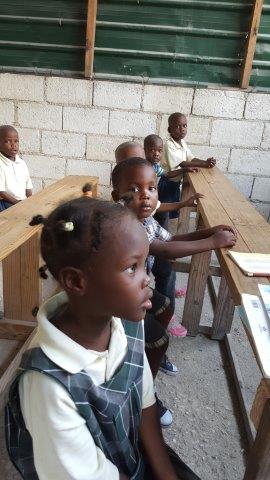|
On October 4, 2016, Hurricane Matthew made landfall on southwest Haiti as a Category 4 storm - the strongest storm to hit the Caribbean nation in more than 50 years. Massive waves, torrential rain and devastating winds hit the southwestern portion of impoverished Haiti. Some residents in shanty towns had been evacuated to shelters but many refused fearing their already limited possessions may be stolen. The peninsula region of the island was cut off from the rest of the country after the La Dique Bridge collapsed - the bridge links the capital Port-au- Prince to the region. Many streets were flooded or blocked with fallen trees.
This devastating storm came six years after a catastrophic earthquake of a magnitude 7.0 occurred on January 12, 2010.The epicenter was near the town of Leogane (the site of two Branch Lutheran Schools) approximately 15 miles west of Port-au-Prince. The earthquake caused major damage and loss of life in Port-au-Prince, Jacmel, and other settlements in the region. Haiti, the poorest country in the Western Hemisphere, now faces the largest humanitarian event since the earthquake six years ago. Following a hurricane, life for the affected can be chaotic. Most people must deal with the loss of home, loss of electricity and severe flooding. However, many people may overlook the possibility of infectious diseases and other health issues. • Wounds may occur due to flying debris, shattered glass, etc. Infections may occur if harmful bacteria enter a break in the skin. A lot of trees are down and people could get injured with scrapes and cuts. • The respiratory system may be affected because high winds bring up mold and other contaminants that would normally be on the ground. • The gastrointestinal system may be affected because personal hygiene may be compromised. Viral infections can easily be spread among people that are in large groups. • Cholera is an infection of the small intestine caused by some strains of the bacterium Vibrio Cholerae. The classic symptom is watery diarrhea that lasts a few days. Vomiting and muscle cramps may also occur. Diarrhea can be so severe that it leads within hours to severe dehydration and electrolyte imbalance. Symptoms start two hours to five days after exposure. The common cause is unsafe water and unsafe food that has been contaminated with human feces containing the bacteria. • Risk factors: o Poor sanitation o Not enough clean drinking water o Poverty • Treatment: o Oral rehydration therapy- preferably something sweet or salty o Antibiotics may be an option. Because of the devastation caused by the hurricane, the health and welfare of the orphanage children is paramount. The children have all three of the main risk factors for cholera. We must all do our best to provide adequate clean drinking water, and clean and nutritious food. I look forward to seeing these dear children in January and hope that they will be doing well. Patricia Meek, a Registered Nurse and Chair of the BLSH Medical Committee, has served the medical needs of the Haiti orphanages since 2012. She has more than 20 years varied nursing experience including more than 15 years working in pediatric wards. She and her husband Jim lived in South and Central America for many years, and have been active in many volunteer roles, often involving at-risk and abused children. Patricia, and Pastor Terry Schultz’s wife, Mary, visit the Haiti orphanages twice per year, and provide medical check- ups and health education to more than 200 children.
0 Comments
Your comment will be posted after it is approved.
Leave a Reply. |
AuthorBranch Lutheran Schools of Haiti, Inc. Archives
May 2024
Categories |

 RSS Feed
RSS Feed